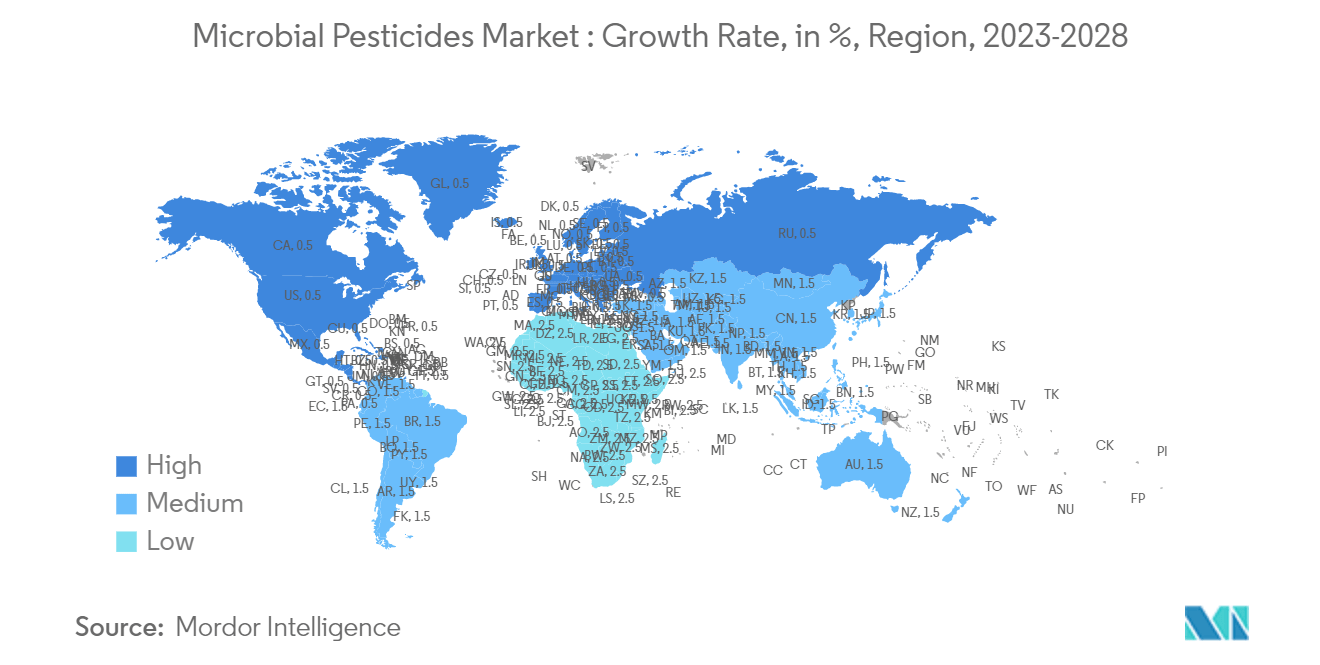Market Trends of Microbial Pesticides Industry
Increasing Organic Land and Adaptation of New Farming Technologies
- The increasing adaptation of new farm technologies led to safer field applications of products like microbial pesticides. Sustainable farming support and acceptance within mainstream agriculture drive farmers toward minimizing the use of chemical pesticides, thereby saving costs, productivity, and the environment. The use of microbial pesticides in sustainable agriculture addresses several environmental and social concerns and offers innovative and economically viable opportunities for growers, laborers, and consumers. This is one of the major drivers for the market's growth of microbial pesticides.
- According to Organic Trade Association (OTA), in 2020, Organic sale in the United States was USD 61.92 billion, with a growth rate of 12.4% from the previous year. If we compare this growth rate of organic sales from an economic perspective with the total United States market for food and non-food products, which grew at less than half the rate, at 4.9%, the consumer behavior shift towards organic is clear.
- Organic food has gained popularity because it is produced in an agricultural system that provides food free from toxic pesticides, synthetic fertilizers, and genetically modified organisms (GMOs). So organic products are seen as being of high quality and are considered safer for both health and the environment.

North America Dominates the Market
- With increasing awareness of the effects of chemical herbicides and pesticides, bioherbicides can be adopted as an alternative, especially for integrated weed management. Bioherbicides are herbicides consisting of phytotoxins, pathogens, and other microbes. It is used as biological weed control.
- Bioherbicides are obtained as compounds and secondary metabolites from microbes such as fungi, bacteria, and protozoa, or phytotoxic plant residues, extracts, or single compounds derived from other plant species. Demand in the region is driven by a number of factors, including the increased interest in green agricultural practices and the loss of many conventional products to reregistration and/or performance issues.
- Product development has also driven up the demand for microbial pesticides. Better biological active ingredients and products are available in the present market that can compete with and complement conventional chemical pesticides. The microbial biopesticide sector is driven by a growing awareness of sustainable food production, farmers' concerns about excessive chemical use, and the rising expense of chemical crop protection. This increased knowledge is reflected in the booming biological sector in the United States, which provides an excellent opportunity to use microbial pesticides.
- Furthermore, in June 2021, EPA registered five biopesticide products containing Bacillus velezensis strain RTI301 and/or Bacillus subtilis strain RTI477, new microbial active ingredients. These biopesticide products consisted of two manufacturing and three end-use products, utilizing natural bacteria to protect seedlings and/or agricultural crops from fungal growth. EPA also concluded the products with registered uses would not affect any nontarget species. Thus, such active initiatives taken by the EPA to approve new microbial ingredients in the country are a driving factor for the growth of the microbial pesticide market.



